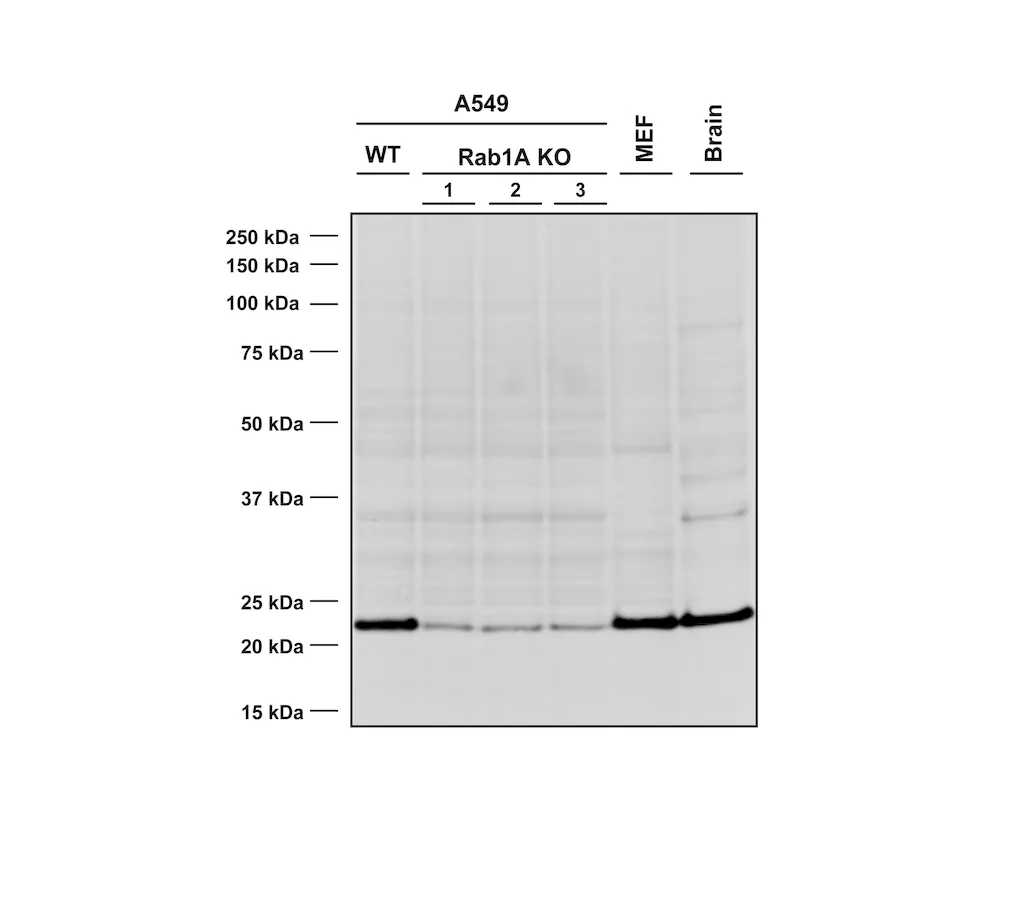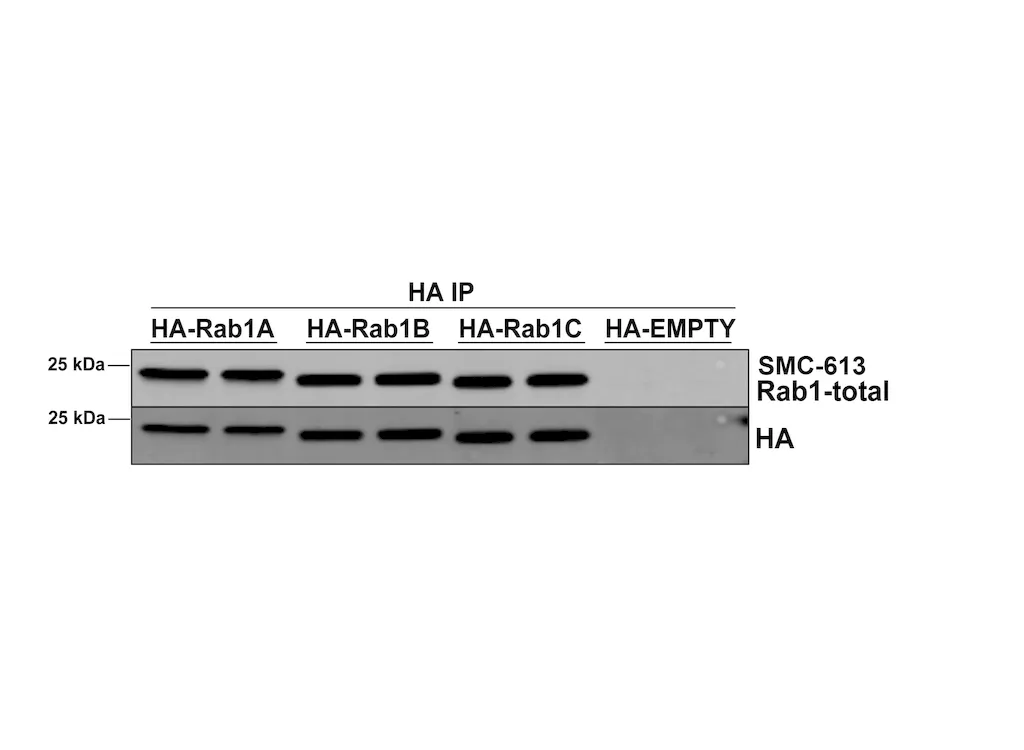RAB1A Antibody: PerCP
CAT:
400-SMC-613D-PCP
Size:
100 µg
Price:
Ask
- Availability: 24/48H Stock Items & 2 to 6 Weeks non Stock Items.
- Dry Ice Shipment: No






RAB1A Antibody: PerCP
- Background: Rab1A is mostly found in the membrane of the endoplasmic reticulum (ER) and Golgi apparatus and is involved in cell signaling, cancer, and neurodegenerative diseases (1). It regulates protein transport from the ER to the Golgi compartment and is involved in growth hormone secretion (2).
- Description: Mouse Anti-Human RAB1A Monoclonal IgG1
- Specifications: Detects ~23 kDa. Cross-reacts with RAB1B and RAB1C.
- Product Name Alternative: GTP binding protein RAB 1A antibody, antibody, RAB 1 antibody, Rab 1A antibody, Rab1A antibody, RAB1A member RAS oncogene family antibody, RAB1A_HUMAN antibody, Ras related protein Rab 1A antibody, Ras-related protein Rab-1A antibody, YPT1-related protein antibody, RAB1 Antibody
- Synonyms: RAB1A, Clone 4G10: PerCP
- CAS Number: 9007-83-4
- UNSPSC: 12352203
- Gene ID: 5861
- Swiss Prot: P62820
- Accession Number: NP_004152.1
- Cellular Locus: Cytoplasm | Endoplasmic reticulum | Endosome | Golgi apparatus | Membrane
- Host: Mouse
- Species Reactivity: Human, Mouse
- Immunogen: Full length recombinant Human RAB1A protein
- Target: RAB1A
- Clonality: Monoclonal
- Isotype: IgG1
- Clone: 4G10
- Conjugation: PerCP
- Tissue Specificity: Low tissue specificity.
- Validated Applications: WB, IHC, ICC/IF, ELISA
- Purification: Protein G Purified
- Limit Of Detection: A 1:1000 dilution of SMC-613 was sufficient for detection of RAB1A in 10 ug (A549, MEF); 20 ug (Mouse Brain) lysates by ECL immunoblot analysis.
- Concentration: 1 mg/ml
- Dilution: WB (1:1000); optimal dilutions for assays should be determined by the user.
- Weight: 0.1
- Buffer: 95.64mM Phosphate, 2.48mM MES and 2mM EDTA
- Precautions: Not for use in humans. Not for use in diagnostics or therapeutics. For in vitro research use only.
- References & Citations: 1. Yang, X. et al. (2016) Oncogene. 35(44):5699-5704 2. pubchem.ncbi.nlm.nih.gov/protein/P62820
